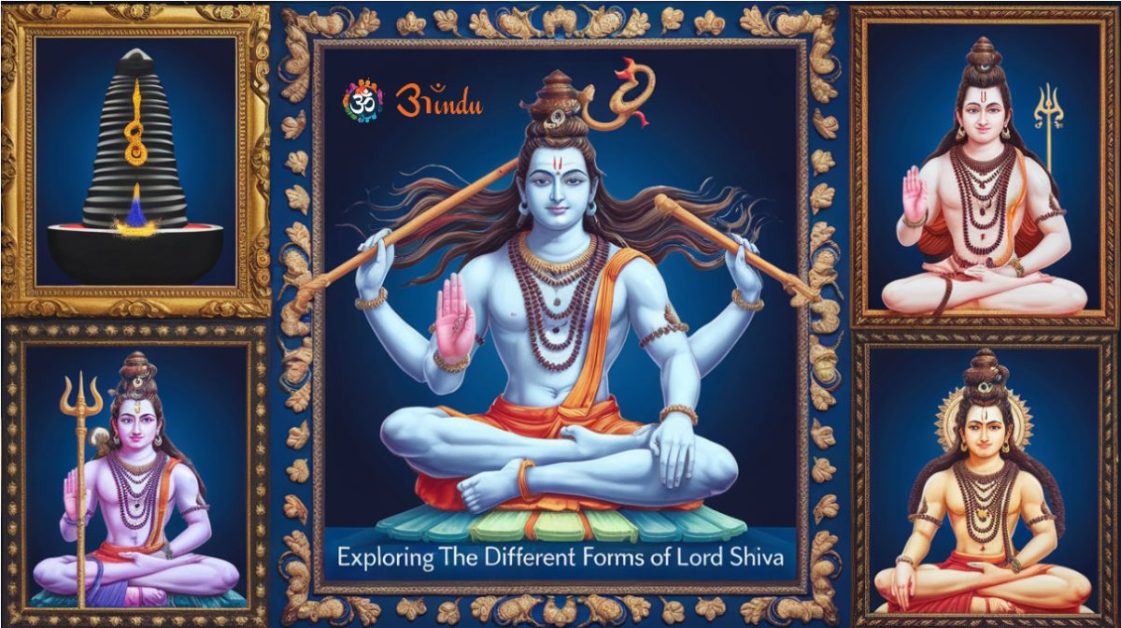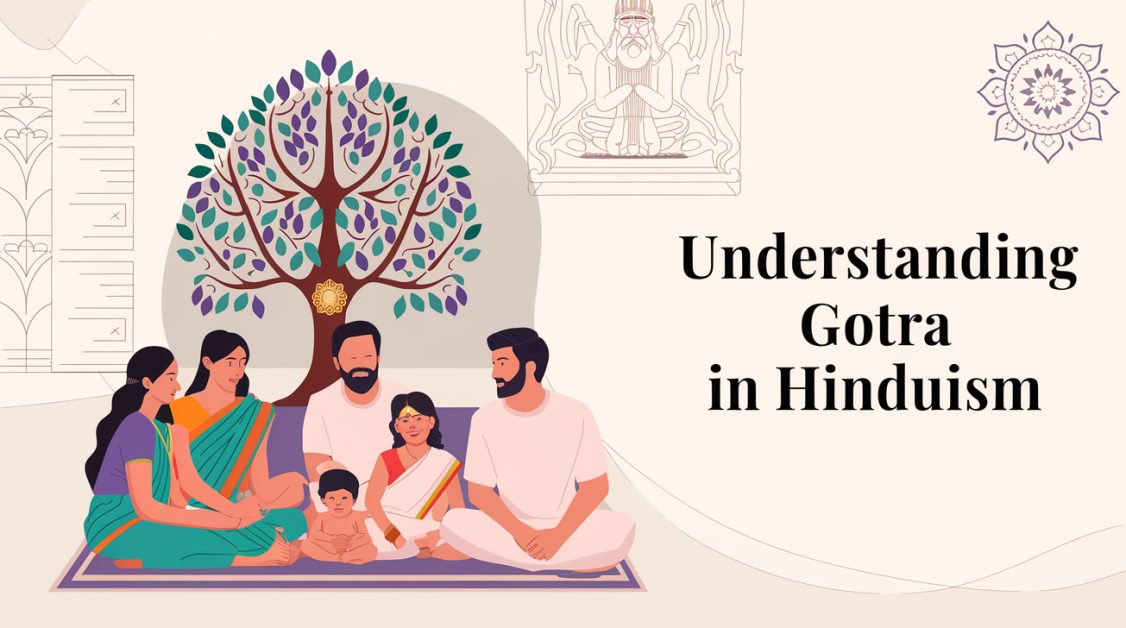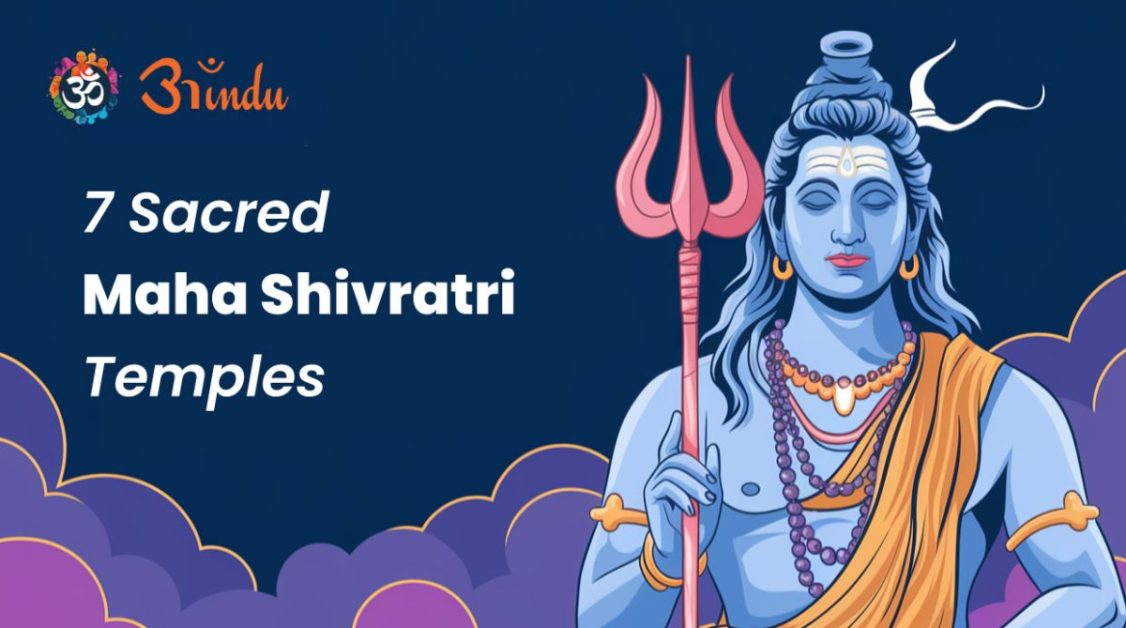
Introduction: The Call of an Invisible River
Every now and then, the earth echoes a memory older than time — a memory of a river that once flowed through the heart of Bharat, nourishing Vedic civilization and inspiring rishis to compose the hymns of divine knowledge. This river is Saraswati, the embodiment of wisdom, purity, and spiritual flow. Though her physical waters have long disappeared from the surface, her spiritual current continues to awaken the Hindu soul — especially once every 12 years, during the sacred event known as Saraswati Pushkaram.
Explore Blog Content
ToggleIn 2025, from May 15 to May 26, lakhs of devotees will gather at Triveni Sangam in Prayagraj, where the sacred Ganga, Yamuna, and the hidden Saraswati are believed to converge. For the Sanatan Dharma practitioner, this event is not just a river festival — it is a reunion with the divine knowledge, a ritual of memory, and an opportunity for moksha.
The importance of Saraswati Pushkaram lies in the timelessness of the goddess herself. Mentioned in the Rig Veda as the “Mother of all Rivers” and praised in Puranas as the stream of consciousness flowing from Brahma’s mouth, Saraswati is not only the presiding deity of learning but also the invisible force that guides speech, clarity, and truth. This blog seeks to take you through the spiritual, cultural, and astrological journey of this once-in-a-dozen-year celebration — blending mythology, rituals, community spirit, and practical travel insights for today’s Hindu seeker.
The Eternal Flow of Saraswati — From Veda to Pilgrimage
“Ya kundendu tusharahara dhavala, ya shubhra vastravritha…”
This shloka, dedicated to Goddess Saraswati, beautifully captures her purity and brilliance — a form draped in white, glowing like the moonlight, seated on a white lotus with a veena in her hand. But who really is Saraswati? And what makes her river so divine that people travel hundreds of kilometers just to take a dip in its hidden waters?
Who is Saraswati Devi in Hinduism?
In Hindu tradition, Saraswati Devi is the goddess of learning, wisdom, speech, music, and creative arts. She is said to be born from the mouth of Brahma, the creator, and is believed to have created Sanskrit, the sacred language of the gods. She is revered across schools of Sanatan Dharma — from the Advaita Vedanta of Adi Shankaracharya to the Bhakti traditions that sing her glories in melodious kirtans.
Saraswati is described in the Rig Veda (6.61.7) as:
“Saraswati naavama arnavam na rinvati”
“Saraswati, flowing rapidly like a vast ocean, removes all ignorance.”
What Happened to the Physical Saraswati River?
The Saraswati River once flowed through northwest India, connecting the Himalayas to the Arabian Sea. Historical references place her between the Yamuna and the Sutlej. She is mentioned over 70 times in the Rig Veda — more than even the Ganga.
Archaeological and satellite studies (like the ISRO–Bhuvan project) have confirmed the dried-up riverbed, matching what is known as the Ghaggar-Hakra system today. Experts believe tectonic shifts, droughts, and river course changes led to Saraswati’s disappearance over 4000 years ago.
But in Sanatan Dharma, disappearance doesn’t mean destruction — Saraswati was believed to have gone underground. Today, her presence is spiritually invoked at Triveni Sangam in Prayagraj, where she is said to flow invisibly beneath the Ganga and Yamuna.
Why Do Hindus Worship a Disappeared River?
Because Saraswati represents more than water — she is Shuddha Jnana (pure knowledge). For Sanatanis, the river is not just a geographical entity but a divine tattva (element). The Pushkaram festival becomes a ritual of remembrance, gratitude, and spiritual reconnection.
In fact, taking a dip in a river that no longer flows above ground, yet is worshipped with such fervor, is symbolic of the faith Hindus have in the invisible, the eternal, the transcendental.
How is Saraswati Mentioned in Modern Science and Scriptures?
- Geological Evidence: NASA & ISRO satellite images from the early 2000s support the existence of a massive river now buried beneath the Thar Desert.
- Scriptural Reference: The Mahabharata mentions Balarama’s pilgrimage to the Saraswati River, as do Skanda Purana and Brahmanda Purana.
As it is said in Skanda Purana:
“Yatra tatraiva teerthaani yatra yatra Saraswati…”
“Wherever Saraswati flows, that place becomes a tirtha (sacred spot).”
The Spiritual Mechanics of Pushkaram – Timing, Astrology & Ritual Power
Saraswati Pushkaram isn’t just another festival marked by date — it’s rooted in the cosmic dance of Jupiter (Guru/Brihaspati) and the zodiac. This ancient calendrical system ensures that each sacred river gets its moment of heightened energy — when divine consciousness descends into the flowing waters.
What is the Pushkaram Cycle and How is it Calculated?
Pushkaram festivals are based on the Jupiter Transit (Guru Peyarchi). There are 12 sacred rivers, each assigned to one of the 12 zodiac signs. When Jupiter enters the sign associated with a river, its Pushkaram begins and lasts for 12 days.
For Saraswati, the zodiac sign is Gemini (Mithuna Rasi).
Thus:
- Saraswati Pushkaram 2025 begins on May 15, when Jupiter enters Gemini.
- The next Saraswati Pushkaram will be in 2037, repeating the 12-year cycle.
This cycle is not just about timekeeping. It is believed that during this alignment:
- The spiritual potency of the river is at its peak.
- Punya phalam (merit) is multiplied manifold.
- Performing snanam (holy bath), tarpana (ancestral offering), and daanam (charity) yields moksha-like benefits.
“Guru: Pushkarapravishti: punyam saptajanmabhih”
“The entry of Jupiter into the zodiac brings spiritual merit equivalent to that earned in seven births.”
Why is the Number 12 So Sacred in Hinduism?
- 12 Adityas (solar deities)
- 12 Jyotirlingas
- 12 months in the Hindu lunar calendar
- 12-year Kumbh Mela cycle
Each represents completion, balance, and return. So a river receiving its Pushkaram every 12 years becomes a moment of re-balancing your karma with the cosmos.
The Ritual Landscape of Saraswati Pushkaram – Bathing in Dharma, Offering to Ancestors, and Awakening Inner Wisdom
As the first rays of dawn hit the banks of the Triveni Sangam, a thousand conches sound off. Devotees — young and old, rural and urban, scholars and farmers — walk toward the confluence with wet hair, folded hands, and hearts full of devotion. The river, though invisible in parts, glistens with faith deeper than any ocean. This is the spiritual canvas of Saraswati Pushkaram.
What Are the Rituals Performed During Saraswati Pushkaram?
Hindu rituals are acts of alignment — they bring the jiva (soul) into resonance with Brahman (the Supreme Consciousness). During Saraswati Pushkaram, these rituals are elevated by the divine presence of Saraswati Devi herself.
Here are the most significant rituals:
1. Pushkara Snanam (Holy Bath)
Taking a dip in the sacred river is believed to:
- Cleanse sins of the past seven lives.
- Awaken dormant energies (karmic cleansing).
- Balance the mind-body complex with universal tattvas.
The bath is performed with silent japa of Saraswati mantras like:
“Om Aim Saraswatyai Namah”
This bija mantra activates the higher mind and invokes divine knowledge.
Bathing should ideally happen during the first 12 days, especially on:
- Pravesham (first day of Jupiter’s entry)
- Purnima (full moon)
- Amavasya (new moon)
- Sundays (linked with Aditya/Sun energy)
2. Tarpanam for Ancestors
On the banks of the river, Brahmins perform tarpan — an offering of water mixed with black sesame, darbha grass, and white flowers. This is a direct connection with the Pitru Loka (ancestral realm).
According to the Garuda Purana:
“Yatra tarpana datavyam, Saraswati tatra Shubha”
“Wherever Tarpan is offered to ancestors in Saraswati’s presence, it becomes sacred and complete.”
Families pray for the peace of their forefathers and seek guidance from their lineage.
3. Saraswati Homam
In Vedic fire rituals conducted by priests, offerings like ghee, dried herbs, and sacred wood are offered to Agni, invoking Saraswati through:
- Saraswati Gayatri mantra
- Purusha Suktam
- Rig Vedic hymns (10.125 – Devi Sukta)
It is believed to remove intellectual obstacles, inspire clarity, and boost children’s education.
4. Aksharabhyasam (Initiation into Learning)
This is a beautiful tradition where young children are introduced to writing. Sitting on the lap of a guru or elder, the child writes the first letter “ॐ” or “अ” on rice spread over a metal plate.
This ritual is particularly powerful during Pushkaram, as Saraswati’s grace flows uninterrupted.
Why Are These Rituals Performed Only at the River?
Rivers are not just water bodies in Sanatan Dharma. They are considered living embodiments of Shakti. During Pushkaram, the river becomes an active spiritual channel. The rituals are performed on the banks, close to the flow — grounding the spiritual process in nature, time, and presence.
Moreover, Hindu rituals emphasize Sankalpa — conscious intention. By traveling to the river, waking early, fasting, praying, and dipping oneself in the cold water, the devotee becomes a vessel of transformation.
What Is the Meaning of Vidya Daan During Pushkaram?
In several Pushkaram sites, books, pens, slates, or fees are donated to underprivileged children. This practice, known as Vidya Daan, is considered:
- A direct way to serve Saraswati.
- A means of passing on spiritual and academic light.
- A dharmic act that carries long-term karmic merit.
Shukla Yajur Veda says:
“Satyam vada, dharmam chara, svadhyaya pravachana abhyam na pramaditavyam.”
“Speak truth, practice dharma, and never neglect the study and teaching of knowledge.”
Can Women Perform Rituals During Saraswati Pushkaram?
Yes. In fact, women are active participants in the Pushkaram journey — performing snanam, homam, chanting, and Vidyarambham for their children. In modern contexts, many women lead devotional bhajan groups, teach scriptures on-site, and assist in annadanam services.
There is no gender restriction for most rituals — unless prescribed by a specific family or community tradition.
Triveni Sangam – The Living Confluence of Faith, Flow, and Freedom
There are rivers — and then there is the Triveni Sangam, where divinity flows in triplicate. Located in Prayagraj, Uttar Pradesh, this confluence of Ganga, Yamuna, and Saraswati is one of the holiest spots in the Hindu cosmos.
Here, the spiritual meets the geographical — the seen merges with the unseen.
What Makes Triveni Sangam So Special During Saraswati Pushkaram?
The site is already celebrated for:
- Hosting the Kumbh Mela every 12 years.
- Being visited by Lord Rama, Sage Bharadwaj, and Sri Chaitanya Mahaprabhu.
- Serving as a final immersion point for ashes, symbolizing liberation.
But during Saraswati Pushkaram, the invisible Saraswati is spiritually activated. The belief is that her undercurrent rises, becoming perceivable through consciousness, bhava, and bhakti.
Many saints claim to feel greater mental clarity and bliss during this time.
Celebrations Across Bharat – Culture, Bhakti & Cleanliness
While Triveni Sangam in Prayagraj is the spiritual heart of Saraswati Pushkaram, the celebrations echo across India’s sacred landscape — from Kaleshwaram in Telangana to Mana Village in Uttarakhand. The festival, though rooted in the Vedic calendar, comes alive in every village and city where Saraswati’s grace is remembered.
How is Saraswati Pushkaram Celebrated in Different Regions of India?
Each region adds its own cultural flavor to the festival. While the core rituals remain the same — bathing, tarpana, homa, and daan — the expressions of devotion vary through folk music, classical art, temple festivities, and even social service.
Telangana & Andhra Pradesh
- Celebrations take place along the Godavari, Krishna, and Saraswati-linked tributaries.
- Harikatha, Kuchipudi dance, and Golla Suddulu performances take over temple courtyards.
- Devotees visit Kaleshwaram, considered a rare Triveni confluence in the south.
Karnataka
- Ghats at Bhadravati and Chikmagalur host special bathing arrangements.
- Temples conduct Saraswati Sahasranama Parayanas and distribute prasadam to thousands.
Uttarakhand (Mana Village)
- The point where Saraswati is said to emerge from a stone crevice behind Vyas Gufa.
- Pilgrims trek up to offer prayers at the Saraswati Udgam Sthal.
- The experience here is serene, meditative, and breathtaking.
In each of these locations, the spirit of unity and celebration bridges caste, language, and economic backgrounds — a reminder of the inclusive soul of Sanatan Dharma.
What Role Does Music and Art Play in Saraswati Pushkaram?
Where there is Saraswati, there is sound — sacred, sonorous, and soul-lifting.
- Bhajan Mandalis gather at sunrise and sunset, performing traditional raagas dedicated to the goddess.
- Young students recite Saraswati Vandana at riverbanks before beginning Aksharabhyasam.
- Instrumental concerts with veena, tabla, and bansuri are common in larger venues.
- Spiritual plays based on the origin of Sanskrit, Vedas, and Saraswati’s curse to Brahma draw crowds across ghats.
In many locations, government and cultural institutions organize Pushkar Kala Utsavs, celebrating India’s classical traditions as part of the divine flow.
“Veena Vadini Varadayini Saraswati”
“O Veena-playing, boon-giving Saraswati, bless us with knowledge and peace.”
How is Cleanliness and Seva Emphasized During Pushkaram?
With lakhs of devotees expected to gather, maintaining hygiene is not just a logistical task — it is a spiritual duty. Hindu scriptures emphasize that the cleanliness of a tirtha (pilgrimage site) directly affects the merit gained.
Modern initiatives include:
- Setting up mobile toilets and water refill stations.
- Plastic-free zones enforced by volunteers.
- Distribution of eco-friendly leaf plates and biodegradable bags for offerings.
- Deployment of Ganga Seva Dal and student volunteer groups for cleanup drives.
In Prayagraj, many NGOs and local colleges participate in “Pushkaram Clean Ghat Challenge” — showcasing dharma in action.
As per Manu Smriti 2.161:
“Shauchaat dharma pravartate”
“From cleanliness arises dharma.”
Thus, every broom swept, every trash bag tied becomes a bhakti act — a yajna for the environment.
The Hidden Saraswati – Myth, Science & the Ghaggar-Hakra Theory
The invisible Saraswati River is perhaps one of the most fascinating intersections of faith and science in Hindu history. For centuries, it was dismissed as a myth — until satellite images, archaeological digs, and hydrological studies started to say otherwise.
What is the Ghaggar-Hakra Theory About the Saraswati River?
The Ghaggar-Hakra River in present-day India and Pakistan is a seasonal river that aligns with the Vedic descriptions of Saraswati’s flow:
- It lies between the Yamuna and the Sutlej, as mentioned in the Rig Veda.
- Ancient Harappan sites like Kalibangan, Rakhigarhi, and Dholavira are found along its dried bed.
- Studies suggest it once flowed perennially, originating from the Himalayas.
Multiple scientific bodies — including ISRO, Archaeological Survey of India (ASI), and international research groups — have confirmed that a mighty glacier-fed river flowed through this region 4,000–5,000 years ago.
Is There Proof that Saraswati Still Exists Underground?
Yes. Several groundwater imaging techniques, along with satellite mapping, have shown subterranean channels of water along the ancient riverbed. In places like Jaisalmer, Bikaner, and Kurukshetra, wells dig into underground Saraswati aquifers that still flow.
This aligns with:
- Skanda Purana (Verse 3.10): “Saraswati flowed below the earth when insulted by the people of earth.”
- Folk traditions that “Saraswati flows where learning resides” — symbolizing both literal and spiritual presence.
How Does This Affect the Faith of Devotees?
Far from shaking it, these discoveries strengthen faith. Hindus don’t need scientific validation to believe — but when modern instruments reveal ancient truths, it creates a bridge between Shraddha (faith) and Jnana (knowledge).
In fact, Saraswati’s disappearance is also interpreted metaphorically — as the loss of dharma and wisdom in Kali Yuga, which is slowly being revived by Pushkarams, Sanskrit revival, and Dharma-based living.
A Dharma for the Next Generation – How Pushkaram Connects the Youth
In a world where distractions are plenty and spiritual anchors are rare, events like Saraswati Pushkaram become powerful moments of cultural awakening — especially for the younger generation. For youth who are more familiar with screen time than sacred chants, this festival becomes a rare bridge between technology and tradition, fast-paced life and eternal wisdom.
How Does Saraswati Pushkaram Engage Young Hindus Today?
Across ghats and riverside towns, something extraordinary happens every Pushkaram — thousands of students, young professionals, artists, and volunteers gather not only for rituals but to reclaim their identity as Sanatani youth.
Real-world Examples:
- At Prayagraj, student groups from Banaras Hindu University and Jawaharlal Nehru University organize Vedic chant circles and awareness workshops.
- In Telangana, digital volunteers use hashtags like #Pushkaram2025 and #SaraswatiRising to educate their peers.
- In Karnataka, Sanskrit schools organize Aksharabhyasam initiation ceremonies for thousands of young children.
These initiatives serve one purpose — reintroduce dharma, not as an obligation, but as a celebration.
What Role Does Pushkaram Play in Cultural Education?
Saraswati Pushkaram isn’t just about bathing in a river. It’s about bathing in the memory of your civilization.
Young Hindus learn:
- That Sanskrit is not a dead language — it’s the language of their soul.
- That rituals aren’t superstitions — they are technologies of the spirit.
- That faith is not inherited blindly — it is discovered joyfully.
For NRI children who come to India during Pushkaram, it becomes a homecoming of the soul. They witness live what they’ve only read in bedtime stories — temples ringing with bells, priests performing homa, rivers glowing under diya-lit skies, and a community rooted in sacred rhythm.
Can Pushkaram Inspire Career and Lifestyle Choices?
Absolutely. Many dharmic professionals today trace their paths to a transformative moment during a spiritual yatra. Whether it was taking a vow at the ghat, hearing a sloka that stayed with them forever, or simply being overwhelmed by the experience — festivals like Pushkaram plant seeds of dharma that grow into lifelong missions.
As Swami Vivekananda said:
“Give me 100 energetic young men and I shall transform India.”
Pushkaram is one way those 100 are awakened.
How Is Tech Helping Spread Pushkaram Awareness?
We live in a time where Instagram reels can carry mantras and AI can explain Upanishads. Saraswati Pushkaram is increasingly going digital:
- Live aarti streams from Prayagraj temples.
- Interactive maps for pilgrims using apps.
- WhatsApp groups for collective prayers, shared travel, and dharmic discussions.
- AR filters celebrating Saraswati Devi’s imagery.
Youth are not abandoning tradition — they are adapting it.
Summary
When we speak of Saraswati Pushkaram, we are not merely referring to a festival. We are speaking of a return — to truth, to origin, to purity.
At its heart, this once-in-12-years celebration reminds us that:
- The greatest rivers may disappear, but their presence endures.
- That knowledge and culture are not optional — they are survival tools.
- That Sanatan Dharma is not a museum of rituals — it’s a living current, much like the Saraswati herself.
“Namo Saraswati Devi Namastasyai Namo Namah”
“Salutations again and again to Saraswati, the source of all knowledge and wisdom.”
As the faithful gather to bathe, offer, chant, and serve — they are not simply practicing a tradition. They are reawakening the Saraswati within.
And in that process, they not only honor the river — they become the river.
Let this Pushkaram be the moment you remember that you are:
- Born of a dharma that speaks in mantras.
- Raised by a civilization that prays before it speaks.
- And destined for a path where the soul finds liberation not by escape, but by immersion in truth.
As Saraswati flows once again — even if unseen — may her wisdom flow through your words, your actions, and your legacy.
FAQs Section
1. What is Saraswati Pushkaram and why is it celebrated?
Saraswati Pushkaram is a sacred Hindu river festival celebrated once every 12 years when Jupiter enters Gemini, the zodiac sign associated with the Saraswati River. It honors the invisible Saraswati, a river of immense spiritual and scriptural significance, and is marked by rituals, bathing, and cultural celebrations across India.
2. When is Saraswati Pushkaram 2025 and where will it be celebrated?
Saraswati Pushkaram 2025 will be celebrated from May 15 to May 26. The main celebrations will occur at Triveni Sangam in Prayagraj, where the Ganga, Yamuna, and Saraswati rivers are believed to meet. Other sites include Kaleshwaram in Telangana and Mana Village in Uttarakhand.
3. What are the rituals performed during Saraswati Pushkaram?
Devotees perform Pushkara snanam (holy dip), Tarpanam (ancestral offerings), Saraswati homams, recitation of sacred texts, Aksharabhyasam (initiation into writing), and Vidya daan. These rituals invoke the blessings of Goddess Saraswati for wisdom, purity, and moksha.
4. How often does Saraswati Pushkaram occur?
Saraswati Pushkaram occurs once every 12 years when Jupiter (Guru/Brihaspati) transits into the zodiac sign Gemini (Mithuna Rasi). The last Saraswati Pushkaram was held in 2013, and the next will occur in 2037.
5. Is there scientific evidence for the Saraswati River’s existence?
Yes. Satellite imaging and archaeological studies by ISRO and ASI have confirmed the dry riverbed of what aligns with the ancient Saraswati, also known as the Ghaggar-Hakra system. Subterranean water flows also exist in regions where the Saraswati was said to flow.
6. Can women and children participate in Saraswati Pushkaram rituals?
Absolutely. Women actively participate in snanam, pooja, bhajans, and community seva. Children engage in Aksharabhyasam rituals, recitations, and cultural activities that introduce them to dharmic values and heritage.
7. How is Saraswati Pushkaram different from Kumbh Mela?
While both are major spiritual gatherings, Saraswati Pushkaram is specifically linked to the Saraswati River and occurs every 12 years with Jupiter’s entry into Gemini. Kumbh Mela rotates between four sacred sites and is based on different planetary alignments.
8. What is the spiritual benefit of attending Saraswati Pushkaram?
It is believed that a single dip during Pushkaram can cleanse lifetimes of karma, offer peace to ancestors, and open the inner Saraswati — the flow of divine knowledge and consciousness. Participating with devotion ensures spiritual purification and deeper dharmic awakening.







